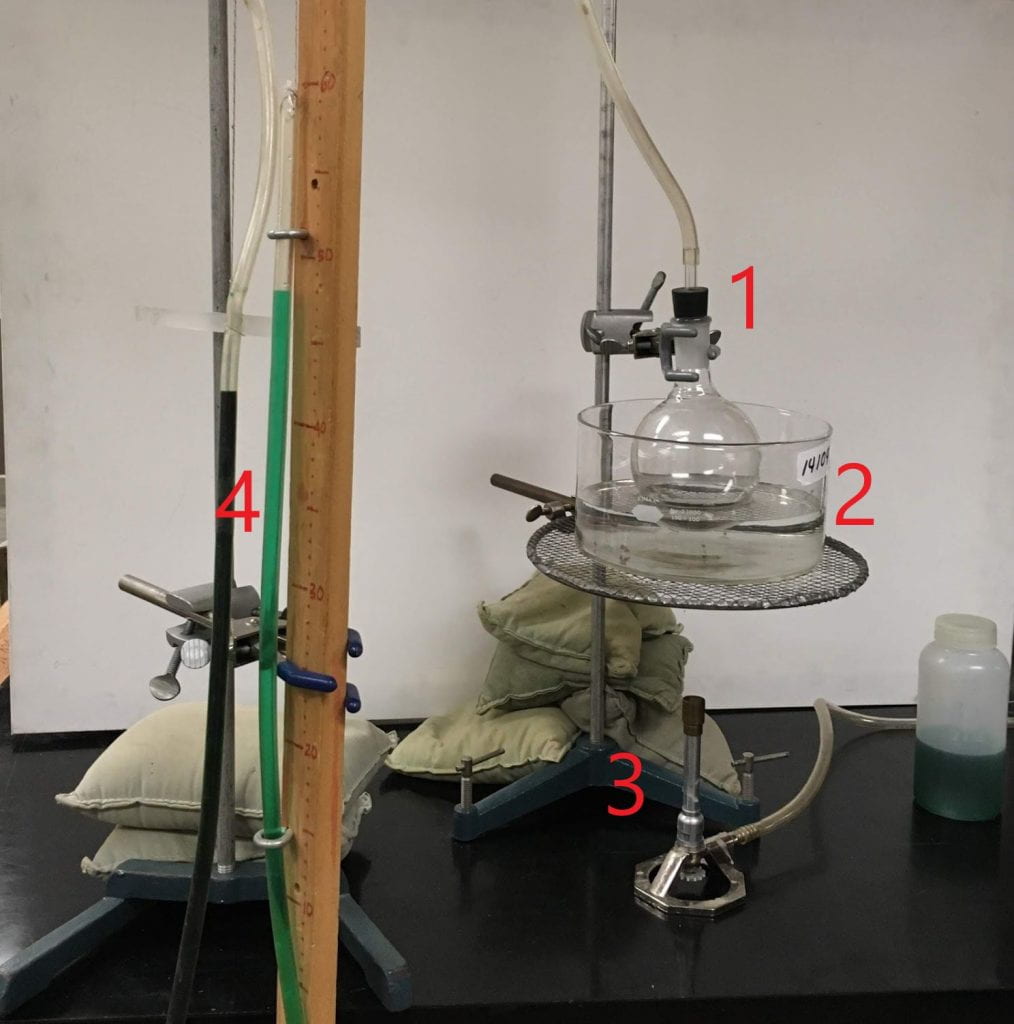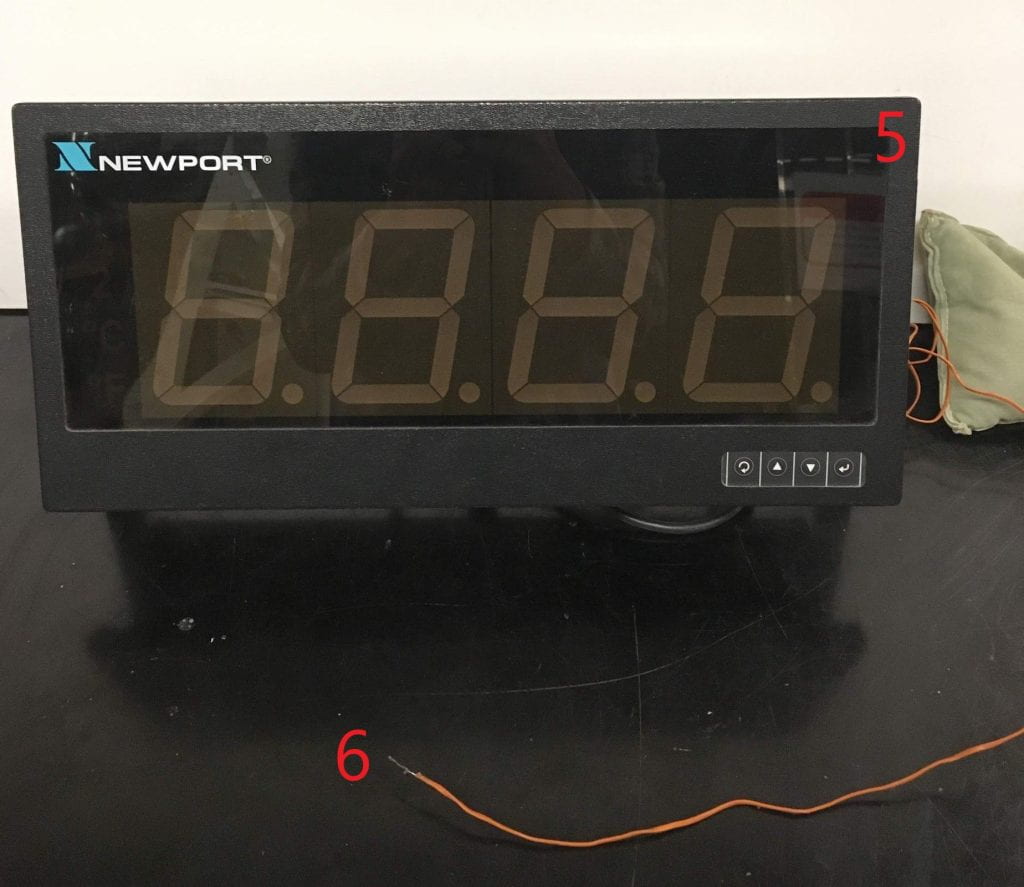Equipment:
- 500 mL round bottom flask with rubber stopper and glass tube inserted [glassware cabinet]
- Shallow wide-mouth pyrex dish [glassware cabinet]
- Bunsen burner [cabinet D]
- Water manometer connected to the 500 mL flask [between cabinets C/D]
- Large digital thermometer [cabinet D]
- Thermocouple [cabinet D]
Demo:
- Fill the crystallizing dish about half way with water and place it on the ring stand clamped to a long metal rod. Place the Bunsen burner under the dish and insert the thermocouple into the water(make sure that the thermocouple is plugged into the thermometer).
- Clamp the flask to the rod and lower it into water.
- Fasten the long ruler to the metal rod that is clamped to the table.
- Thread the string up through the screw eyes. Tie it to the lower clamp.
- Fill the tube with colored water until the water level reaches the plastic rod holding the left sleeve of the tube. This plastic rod is a mark for constant volume during the experiment.
- Connect the plastic tube to the rubber stopper. Cork the flask tightly.
- Start heating the water in the crystallizing dish with the burner. As the pressure increases, pull the plastic tube up (by pulling the string) to keep the volume constant.
- With the help of a student, make a T-P(T) table and draw the graph.
Explanation:
This demonstration shows the properties of an isochoric, or constant volume, process in the form of a thermometer. Air is heated by a water bath and a large water manometer is used to keep the volume of air constant and measure the internal pressure. The instructor can obtain a roughly accurate plot of the isochoric process and extrapolate it to absolute zero with the following equation.
In an isochoric process, the volume remains unchanged. Using the pressure-volume work equation, one can see that no work is done on the gas.
Because there is no work being done on or by the gas, the first law of thermodynamics can be used to show that all heat going into the system goes directly to increasing the energy of the system in the form of pressure and temperature. In the following equations, Q is the net heat transfer into the system, U is the change in internal energy, and W is the net work done on the system.
As the open end of the manometer is raised, more pressure is exerted on the air by the column of water, keeping the volume constant. This added pressure is equal to the pressure increase of the enclosed gas which can be used to determine the temperature increase via the Ideal Gas Law shown below:
Written by: Finn Amend

